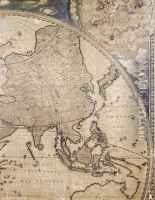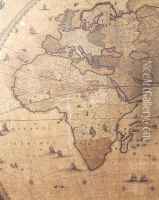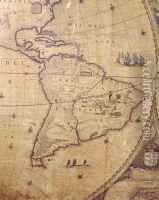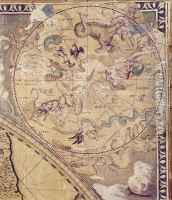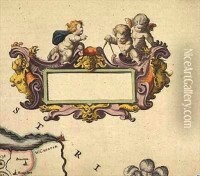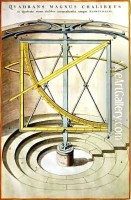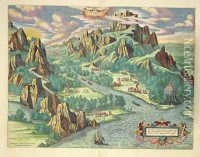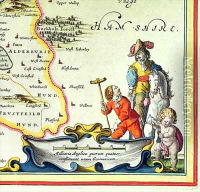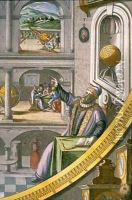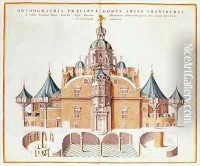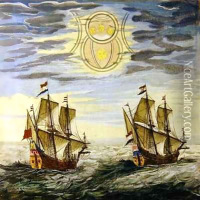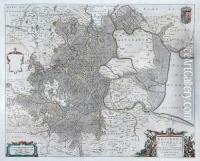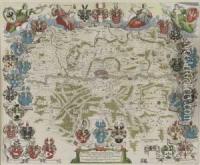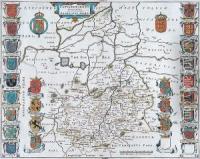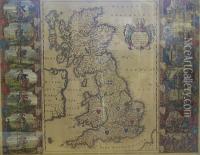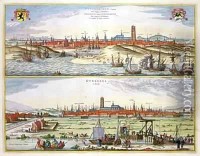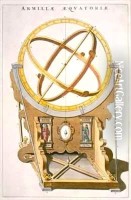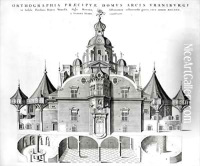Joan Blaeu Paintings
Joan Blaeu was a Dutch cartographer, atlas maker, and publisher who lived during the 17th century, a period often referred to as the Dutch Golden Age of cartography. Born into a prominent family of cartographers, Joan was the son of Willem Blaeu, who was also a renowned cartographer and instrument maker. Joan Blaeu took over the family business in 1638, following his father's death.
Joan Blaeu's cartographic works were highly esteemed for their accuracy, detail, and artistic quality. He is best known for his grand atlas, 'Atlas Maior,' which was first published in 1662 and expanded in subsequent editions. This atlas was one of the most expensive and comprehensive atlases of its time, containing detailed maps of countries and regions all over the world, with elaborate decorations and illustrations.
Apart from his work on the 'Atlas Maior,' Blaeu also produced a wide range of other cartographic materials, including town books, maritime charts, and celestial and terrestrial globes. His maps and atlases were not only scientific tools but also works of art, often decorated with ornate cartouches, allegorical figures, and other embellishments that reflected the baroque style of the era.
Blaeu's printing house became one of the most significant and prolific centers of cartography and publishing in Europe. Tragically, it was largely destroyed in a fire in 1672, which resulted in the loss of many printing plates and maps.
Joan Blaeu's contributions to cartography were instrumental in shaping the understanding of world geography at the time. His works were distributed widely throughout Europe and influenced both contemporary and future generations of mapmakers. Despite the fire that devastated his printing house, Blaeu's legacy endures through the surviving copies of his maps and atlases, which remain highly valued by collectors and historians to this day.
